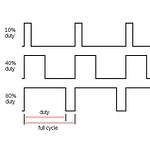What’s the backbone of any smart home system? Is it the stylish devices or the voice-controlled assistants? Or is it something more fundamental that holds the whole system together? Yes, you’ve guessed it! The seamless connectivity binds all the devices and makes them work as one unified system. Choosing the right type of connectivity for your smart home system to function optimally is essential.
But what’s the best option? Is it Zigbee, Z-Wave, or WiFi?
This article will shed light on these three key players in smart home connectivity, helping you make an informed decision. Let’s embark on this exploratory journey together!
Section 1: Understanding the Basics
What is Zigbee?
Overview of Zigbee
Zigbee is a wireless technology designed specifically for low-rate personal area networks. This technology enables smart devices to communicate with each other efficiently and economically.
The Technology Behind Zigbee
The Zigbee protocol is based on the IEEE 802.15.4 standard, operating at 2.4 GHz (a frequency also used by WiFi). Its standout feature is the ability to form mesh networks, wherein each device (node) can communicate with its nearby nodes, creating multiple possible paths for the signal.
What is Z-Wave?
A Brief Introduction to Z-Wave
Z-Wave, like Zigbee, is a wireless protocol for smart home networks. Created by Danish company Zensys, it’s now managed by Silicon Labs and the Z-Wave Alliance.
The Technology That Drives Z-Wave
Z-Wave also uses mesh networking. However, it operates at a lower frequency than Zigbee, around 908.42 MHz in the US and 868.42 MHz in Europe. This lower frequency can result in less interference from other devices.
What is WiFi?
Understanding WiFi
WiFi is the most commonly used wireless network for internet access in homes, offices, and public spaces worldwide.
The Underlying Technology of WiFi
WiFi operates at two primary frequencies: 2.4 GHz and 5 GHz. It uses a point-to-point network structure, where each device connects directly to the router.
Section 2: Features Comparison
In this section, we compare Zigbee, Z-Wave, and WiFi based on four crucial aspects: Range of operation, data transfer speed, power consumption, and compatibility/interoperability. The details of each technology are discussed in depth following the table.
| Zigbee | Z-Wave | WiFi | |
| Range | 10-100 meters (Mesh network) | 30-100 meters (Mesh network) | 50-100 meters (Limited mesh support) |
| Speed | Up to 250 kbps | 40-100 kbps | 11 Mbps – 1+ Gbps |
| Power Consumption | Very low | Very low | Higher |
| Compatibility | Broad, numerous manufacturers | Broad, interoperability focus | Ubiquitous, potential software issues |
Range of Operation
Zigbee’s Range
Zigbee offers a range of approximately 10-100 meters, depending on the environment and device power. However, its mesh network capability means this range can effectively be extended across a larger network of devices.
Z-Wave’s Range
Z-Wave offers a similar range to Zigbee, typically around 30-100 meters. It, too can extend its reach through its mesh network structure.
WiFi’s Range
WiFi’s range is generally higher, with most modern routers covering approximately 50-100 meters indoors. However, WiFi doesn’t inherently support mesh networking, which may limit its effective range in larger homes.
Data Transfer Speed
Zigbee’s Speed
Zigbee supports data rates up to 250 kbps, which is more than enough for most smart home applications.
Z-Wave’s Speed
Z-Wave’s data rates are lower, typically around 40-100 kbps. However, this is still sufficient for the majority of smart home uses.
WiFi’s Speed
WiFi, designed primarily for high-speed internet access, offers much higher data rates, typically between 11 Mbps to over 1 Gbps depending on the specific protocol (802.11b/g/n/ac/ax).
Power Consumption
How Much Power Does Zigbee Consume?
Zigbee
devices typically consume very low power, making them ideal for battery-operated smart home devices.
Z-Wave’s Power Usage
Like Zigbee, Z-Wave also excels in power efficiency, again making it suitable for devices running on batteries.
Evaluating WiFi’s Power Efficiency
WiFi devices generally consume more power, given their higher data rates and direct-to-router communication structure.
Compatibility and Interoperability
Zigbee and Device Compatibility
Zigbee enjoys a broad compatibility range, supported by numerous smart home manufacturers.
Z-Wave’s Compatibility Spectrum
Z-Wave also boasts broad device support, with a strong focus on interoperability among different manufacturers.
WiFi’s Interoperability Capabilities
Given WiFi’s ubiquity, many smart devices support it. However, interoperability can be more challenging due to various manufacturers’ different software protocols.
Section 3: Security Aspects
Security Measures in Zigbee
Zigbee uses AES-128 symmetric encryption to secure its networks, offering a robust level of security.
Understanding Z-Wave’s Security Protocols
Z-Wave also uses AES-128 encryption and includes additional security measures like the Security 2 (S2) framework for improved security.
How Secure is WiFi?
WiFi security depends on the specific protocol (WPA2, WPA3) but can provide strong security when appropriately configured.
Section 4: Use Cases and Applications
Typical Zigbee Use Cases in Smart Homes
Zigbee’s low power usage makes it ideal for battery-operated devices like sensors and smart locks.
Z-Wave’s Strengths in Specific Scenarios
Z-Wave’s strength lies in its dedicated smart home focus, making it an excellent choice for various applications, from lighting to security systems.
Where WiFi Shines in Home Automation
WiFi excels where high data rates are required, like for streaming video to smart TVs or video doorbells.
Section 5: Pros and Cons
Analyzing the Advantages and Disadvantages of Zigbee
Pros: Low power, mesh networking, wide device support.
Cons: Potential for interference at 2.4 GHz.
Weighing the Pros and Cons of Z-Wave
Pros: Low power, mesh networking, less prone to interference.
Cons: Lower data rate, and less used frequency can limit third-party device availability.
The Strengths and Weaknesses of WiFi
Pros: High data rates, wide device support, and standard technology.
Cons: Higher power consumption, lacks inherent mesh networking.
Deciding the Best Fit: Zigbee, Z-Wave, or WiFi?
Choosing between Zigbee, Z-Wave, and WiFi will depend on your specific needs, such as the types of devices you plan to use, the size of your home, and your comfort level with technology. Each has its strengths and weaknesses, so consider your requirements carefully.
Future Trends in Smart Home Connectivity
Looking forward, trends like the increasing adoption of IoT and the demand for more integrated smart home ecosystems will likely influence these technologies’ evolution and use.
FAQs
All three technologies have similar costs for end devices. Still, overall costs can depend on other factors like the need for dedicated hubs (Zigbee, Z-Wave) versus using an existing router (WiFi).
Many smart home systems support multiple protocols, and devices like smart hubs can often bridge different technologies.
Consider the types and number of devices you plan to use, the range required, power constraints, data rate needs, and your comfort level with the technology.
Mesh network technologies like Zigbee and Z-Wave can offer advantages for larger homes because they can extend the range through the mesh. However, WiFi with additional extenders or mesh WiFi systems can also work well.
Mesh networking is a key feature of Zigbee and Z-Wave, enabling better range and reliability in larger homes or challenging environments.
It depends on the use case. Zigbee is lower power and supports mesh networking, making it better for battery-operated devices and larger home networks. However, Wi-Fi is better for high data rate applications and devices that require internet connectivity.
Zigbee and Z-Wave are low-power, short-range technologies designed for home automation, with built-in support for mesh networking. Wi-Fi is a high-speed technology designed primarily for internet access and local area networking.
Z-Wave is typically better for a large network of low-data-rate devices due to its lower power consumption and mesh networking. Wi-Fi, on the other hand, is better for devices requiring high-speed data transfer or internet access.
Both have similar capabilities, but Zigbee tends to support a higher data rate and more nodes, while Z-Wave has a better range per hop. The best choice depends on the specific requirements of your smart home setup.
Zigbee typically uses the 2.4 GHz frequency band.
Yes, Zigbee signals can pass through walls, though the signal strength decreases with each obstruction.
Wi-Fi is often cheaper because it’s a more mature and widely used technology, leading to economies of scale. However, the cost difference is narrowing as Zigbee devices become more common.
No, Zigbee does not need the internet to operate, making it good for local, offline control of devices.
The cost depends on the specific devices. While Wi-Fi devices can be cheaper due to economies of scale, low-end Zigbee devices can also be relatively inexpensive.
Zigbee has a shorter range per device than Wi-Fi (around 10-100 meters versus 50-100 meters for Wi-Fi), but Zigbee’s mesh networking allows it to cover a larger area in a multi-device network.
Zigbee has a lower data rate than Wi-Fi, a shorter range per device than Wi-Fi, and may be less compatible with devices not specifically designed for home automation.
The main disadvantages of Zigbee compared to Wi-Fi are its lower data rate and its reliance on specific home automation devices for compatibility.
Yes, like Zigbee, Z-Wave can work without an internet connection, providing local control of devices.
The best wireless type depends on your specific needs. Zigbee and Z-Wave are great for home automation, while Wi-Fi is great for high-speed internet access and streaming.
Zigbee is neither Bluetooth nor Wi-Fi. It’s a separate protocol designed for low-power, low-data-rate applications, particularly home automation.
Zigbee is often preferred for home automation because it’s low-power, supports mesh networking, and can handle many devices, making it ideal for a smart home environment.
Summary
In summary, Zigbee, Z-Wave, and WiFi each offer distinct advantages for smart home connectivity. Understanding these technologies’ specifics is important to choose the best option for your smart home.






